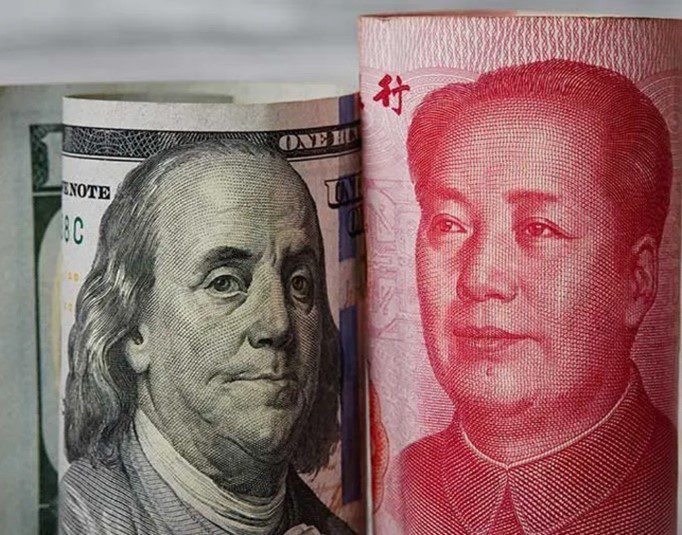2018 has seen one of the most radical changes in America’s stance towards China. One of the most significant outcomes of this is the ever-escalating U.S. – China Trade War
More recently, the Trump administration had slapped a third wave of tariffs on $200 billion of Chinese goods. This means, that nearly half of all the products the US buys from China will have tariffs imposed on them. Majority of the products to be found under the tariff list are consumer goods, such as handbags, flat-screen televisions, office supplies, cutlery etc.
A first-hand effect of these tariffs is that U.S. consumers will probably experience an increase in prices. Simultaneously, Chinese exporters will likely see a decline in orders and ultimately, both countries will sustain pressure on their economic growth rates.
As the tensions rise and the trade war keeps escalating, let’s take a moment to retrace the events that lead Washington to place tariffs on almost 6000 types of Chinese goods.
How the trade war started
The tariffs, initiated by the Trump administration, came into being after the U.S. concluded an investigation into China’s more controversial trade practices. These involved systematically stealing intellectual property – e.g. by forcing foreign businesses to hand over their most prized technology in exchange for access to the Chinese market.
To push back, the White House is applying Section 301 of the Trade Act of 1974, which grants the U.S. Trade Representative authority to respond to a country’s unfair trade practices which restrict access to American exporters. Under this statute, the U.S. may unilaterally impose taxes on incoming goods (tariffs), on a foreign country’s exports or restrict its access to the U.S. market.
The tariffs enforced by Trump administration add a 25 percent border tax on Chinese goods when imported into the U.S. Consequently, China responded by imposing 25 percent tariffs on $34 worth of U.S. goods, including soybeans, automobiles, and lobsters. This was accompanied with an accusation of the United States setting off “the largest trade was in economic history of date” and violating the rules of World Trade Organization.
An attempt to ruin China’s Economy
The tariffs imposed by Trump administration are part of an economic strategy in pursuit of punishing China.
The idea is to suspend China from being the center of the global supply chain. Tariffs could instigate manufacturers to look elsewhere for the required components, as the money would move to alternative companies in other countries. Think about it – Apple alone has 27 China-based suppliers. With the tariffs also aiming high-tech products, this could incite a significant shift in production.
Moreover, the tariffs serve as a warning to multinational companies, such as South Korean Samsung or America’s Google, for doing business in China. By creating a situation where operating in China would either be expensive or politically damaging, the Trump administration is urging companies to take the production elsewhere – for example, to the United States.
Tariffs will sting deeply
For both China and the U.S., the imposed tariffs against each other will have serious impacts. By targeting high-tech Chinese products, the U.S. is economically pressuring the “Made in China 2025” program of Beijing – an initiative by the Chinese government to revamp China into a progressive manufacturing powerhouse.
Likewise, China is targeting U.S agricultural exports, which come from states with many Trump-supporters, thus being regions where the president does not want to see massive layoffs and economic instability.
As of now, the imposed tariffs have been one of the reasons for the Haier Group to suspend plans to sell products made in the U.S. by its GE Appliances brand. Haier had acquired the home appliances business from General Electric in 2016, in one of the highest-profile Chinese deals in the US, with plans to sell brand’s products to affluent Chinese consumers in November. Moreover, the Louisville, Kentucky-based GE Appliances have raised their prices twice within 2018, partly due to higher steel prices after the Washington imposed tariffs.
Similarly, the escalating tariffs will undoubtedly cancel Jack Ma’s plans to create 1 million jobs in the U.S., as he promised last year when meeting with Trump. In his more recent statements, China’s richest man left no doubt about his support for China, by saying that China should shift its business away from the U.S. and target the rest of the world instead.
The tariffs have already had a huge impact on companies and the economies of both countries. And this is just the beginning of changes on a global scale, as Jacob Frenkel, the chairman of J.P. Morgan Chase International, warns: “We know one thing. A trade war will be extremely dangerous for the world economy and once it slides it will be very difficult to turn it around,” drawing parallels to the global tariffs imposed in the 1930s, which exacerbated the Great Depression. With the wide macro-economic risks involved, other countries may be pressured to get involved in the dispute as relations strain.
Stay tuned for Part 2 of the U.S. – China Trade War series, where we will focus on the impact this war has on companies and how to mitigate it!
Wondering how these disputes may affect your company? Get in touch with our team for consultation and follow us on social media to receive the latest news!
Scan for our WeChat mini-program







